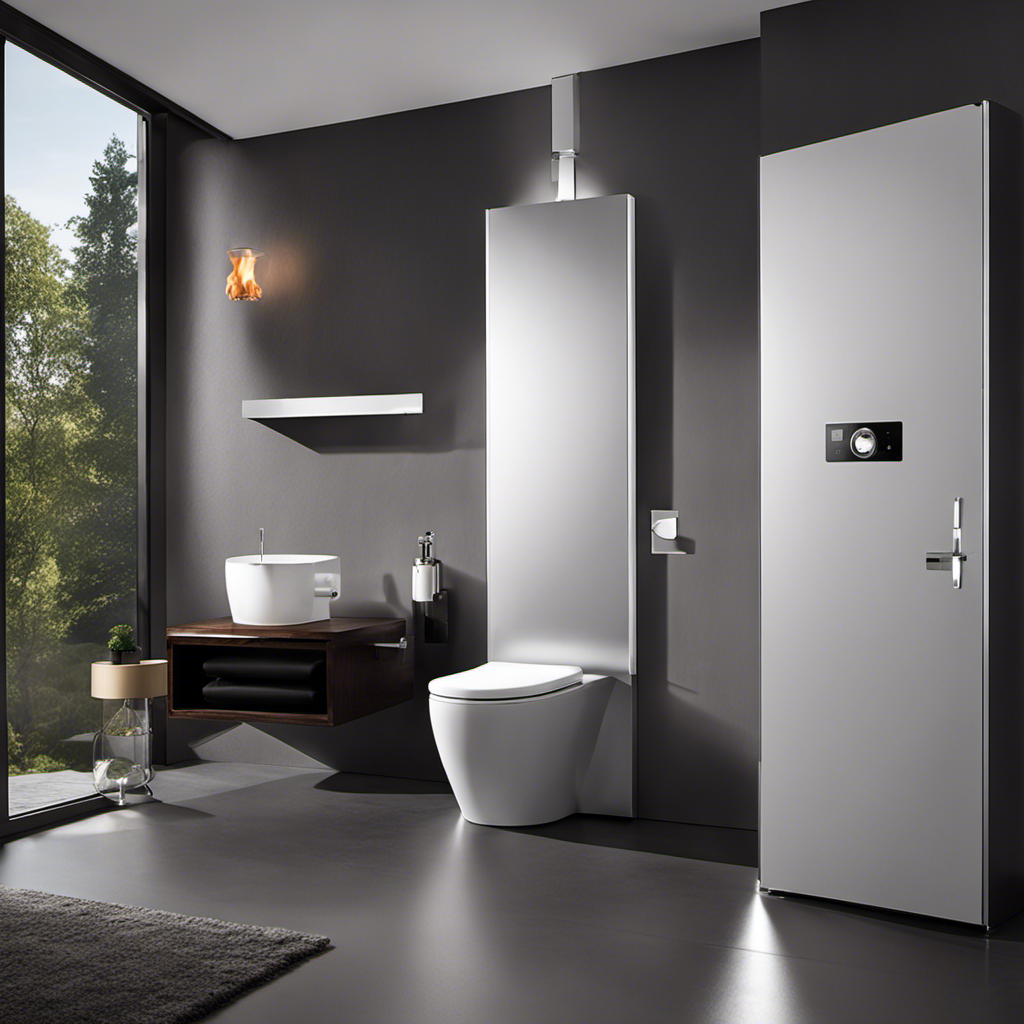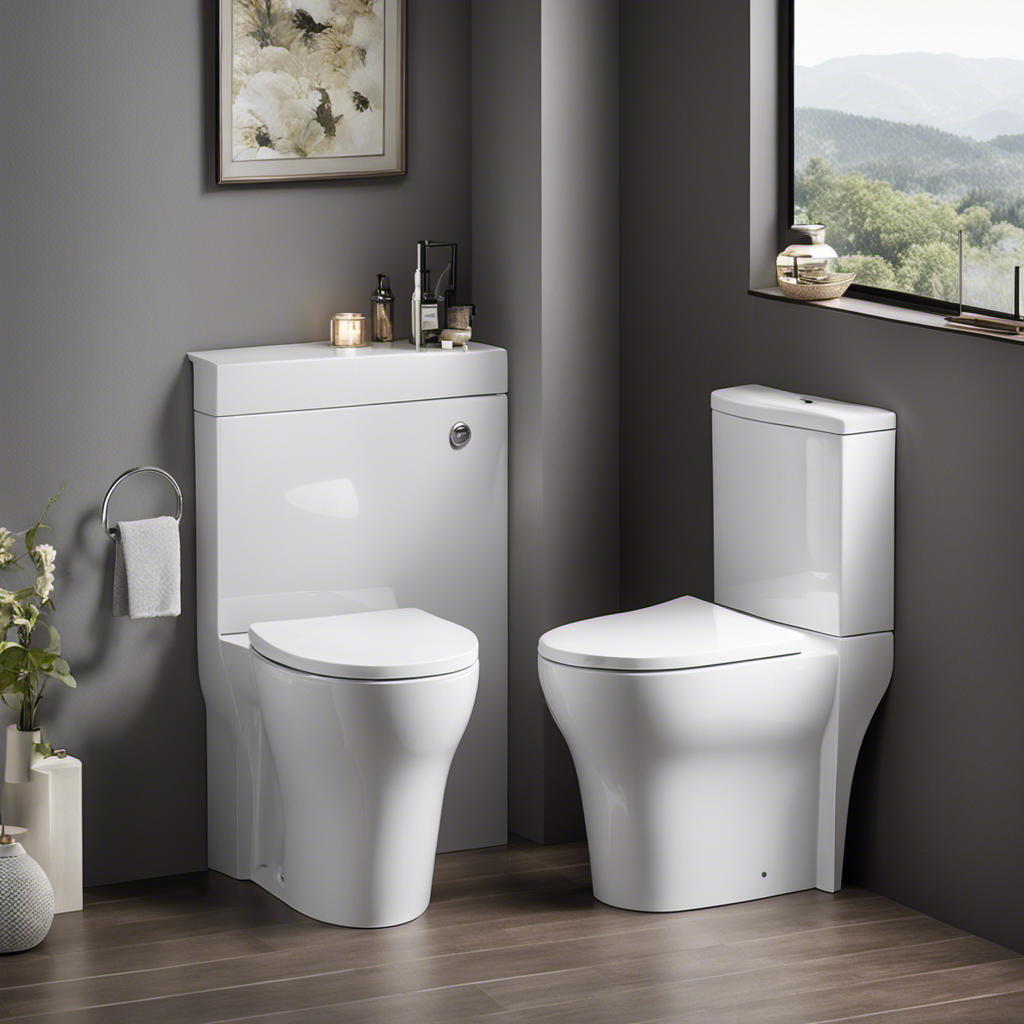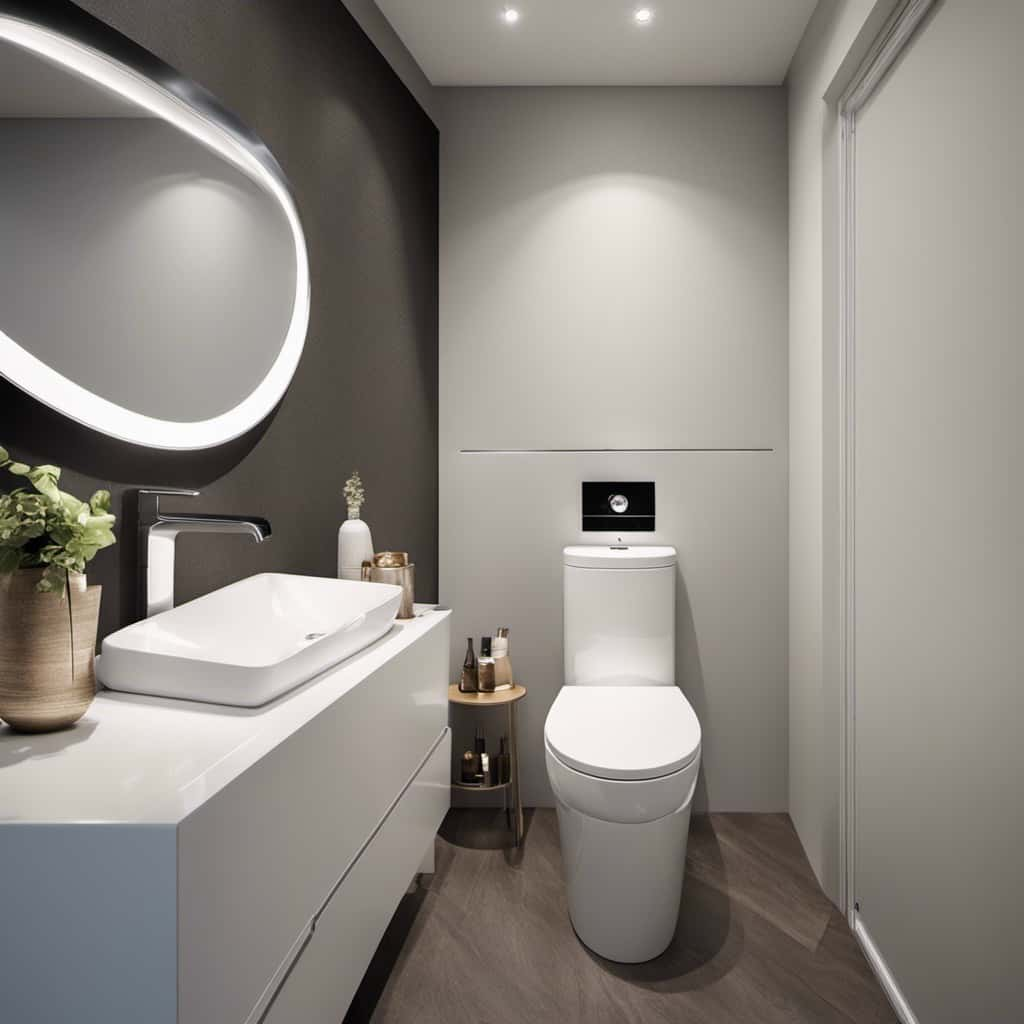I’ve always been curious about alternative toilet systems, so when I first heard about incinerator toilets, I was intrigued. Imagine a toilet that doesn’t use water and transforms waste into ash through the power of heat.
It’s a fascinating concept, and in this article, we’ll dive into the world of incinerator toilets to understand how they work, their benefits, different types available, and what you should consider before installing one.
Plus, we’ll explore the maintenance and care required to keep them running smoothly.
Key Takeaways
- Incinerator toilets use intense heat to burn waste into ash and vapor, eliminating the need for water and killing bacteria.
- They offer benefits such as cost-effectiveness, minimal environmental impact, and convenience.
- There are different types of incinerator toilets, including electric, gas, and composting toilets, each with their own advantages.
- Considerations before installing an incinerator toilet include the availability of electrical or gas supply, upfront costs, and the need for additional composting setup (for composting toilets).
How Does an Incinerator Toilet Work
An incinerator toilet works by using intense heat to burn waste into ash and vapor. This innovative technology is becoming increasingly popular due to its numerous benefits.
By incinerating waste, incinerator toilets eliminate the need for water, making them an excellent choice for areas with limited water supply or where plumbing is not feasible. Additionally, the incineration process kills bacteria and eliminates odors, ensuring a clean and hygienic environment.
From an environmental standpoint, incinerator toilets have a lower impact compared to traditional flush toilets. They do not require water for flushing, reducing water usage and conserving this precious resource. Furthermore, the ash produced can be safely disposed of, eliminating the need for sewage treatment facilities.
Overall, incinerator toilets offer a sustainable and efficient solution for waste management.
Benefits of Using an Incinerator Toilet
You’ll love the convenience and cleanliness of using an incinerator toilet in your home. Not only is it cost-effective, but it also has a minimal environmental impact.
The incinerator toilet uses electricity to heat waste to a high temperature, reducing it to ashes. This eliminates the need for water, sewage systems, and costly maintenance.
From a financial perspective, the initial investment may be higher than a traditional toilet, but the long-term savings on water bills and maintenance make it a cost-effective choice.
Moreover, the environmental impact is significantly reduced as there is no need for water consumption or the use of chemicals for waste treatment. Additionally, the incineration process ensures that waste is sterilized and safe for disposal.
Overall, an incinerator toilet is a practical and eco-friendly option for any home.
Types of Incinerator Toilets
There are different types of incinerator toilets available for residential use. These toilets offer a unique solution for waste management, as they incinerate solid waste into ash, eliminating the need for water and sewer connections. When considering the environmental impact, incinerator toilets can be a more sustainable option compared to traditional toilets. They require less water and do not contribute to sewage treatment processes, reducing strain on water resources and wastewater treatment plants. Additionally, incinerator toilets produce minimal odor and emissions, making them a cleaner option.
In terms of cost comparison, incinerator toilets may have a higher upfront cost compared to conventional toilets. However, they can provide long-term savings in water and sewage bills, as well as potential maintenance costs. It is important to consider the specific needs and circumstances of your household before making a decision on which type of incinerator toilet to choose.
| Type | Description | Pros | Cons |
|---|---|---|---|
| Electric | Uses electricity to heat and incinerate waste. | – Easy to install and use |
- Minimal odor
- Low maintenance | – Requires electricity supply
- Higher upfront cost |
| Gas | Uses natural gas or propane to heat and incinerate waste. | – Efficient and quick incineration - Reliable operation
- Cost-effective for households with access to natural gas/propane | – Requires gas supply
- Higher upfront cost |
| Composting | Combines incineration with composting to convert waste into ash and compost. | – Sustainable solution - Produces nutrient-rich compost
- Reduced environmental impact | – Requires additional composting setup
- Higher upfront cost |
Considerations Before Installing an Incinerator Toilet
Before installing an incinerator toilet, it’s important to consider factors such as electrical or gas supply availability, upfront costs, and the need for additional composting setup.
When it comes to installation requirements, incinerator toilets require a stable power supply for the electric heating element or a gas connection for the combustion process. It is crucial to ensure that these resources are readily available in your location.
Additionally, the upfront costs of purchasing and installing an incinerator toilet can vary depending on the brand and model chosen. It is advisable to conduct a cost analysis to determine if the investment aligns with your budget.
Lastly, some incinerator toilets may require additional composting setup for proper waste management. Taking these factors into account will ensure a successful installation process.
Transitioning into the next section, once your incinerator toilet is installed, proper maintenance and care are essential to ensure its longevity and efficient operation.
Maintenance and Care for Incinerator Toilets
Once installed, it’s crucial to regularly clean and inspect your incinerator toilet to ensure proper functionality. Here are a few important maintenance tips to keep your incinerator toilet running smoothly:
-
Clean the bowl: Regularly clean the bowl with a non-abrasive cleaner to prevent the build-up of waste residue. Avoid using harsh chemicals that can damage the unit.
-
Check the ash container: Empty the ash container regularly to prevent it from overflowing. Dispose of the ash properly according to local regulations.
-
Troubleshoot common issues: If you encounter any problems such as a weak flame or unusual odors, check the power supply, fuel level, and ventilation system. Consult the manufacturer’s manual for specific troubleshooting steps.
Proper maintenance and care for your incinerator toilet will help prolong its lifespan and ensure a hygienic and efficient waste disposal system.
Frequently Asked Questions
Are Incinerator Toilets Environmentally Friendly?
Incinerator toilets have a low environmental impact and are energy efficient. They use high temperatures to burn waste into ash, reducing water usage and eliminating the need for sewage systems.
Can Incinerator Toilets Be Used in Off-Grid Homes?
Yes, incinerator toilets can be used in off-grid homes. They provide an alternative waste management solution, allowing for off grid living without the need for traditional plumbing systems.
How Much Does It Cost to Install an Incinerator Toilet?
The cost of installing an incinerator toilet varies depending on factors such as the brand, model, and location. It is important to do a cost comparison and consider the installation process when making a decision.
Are There Any Health Risks Associated With Using an Incinerator Toilet?
There are potential fire hazards associated with incinerator toilets due to the high temperatures required for combustion. Additionally, the burning process can release pollutants into the air, impacting indoor air quality.
Can Incinerator Toilets Be Used in Cold Climates?
In cold climates, incinerator toilets offer several advantages. They require minimal maintenance and can effectively dispose of waste without the need for plumbing or water. Their ability to handle low temperatures makes them a practical choice.
Conclusion
In conclusion, the incinerator toilet is a revolutionary piece of technology that takes bathroom experiences to new heights. With its ability to quickly and efficiently burn waste, this toilet eliminates the need for traditional plumbing systems and septic tanks.
Not only does it save space and money, but it also reduces environmental impact by converting waste into ash. So, if you’re looking for a toilet that will leave you in awe with its efficiency and eco-friendliness, look no further than the incredible incinerator toilet!










